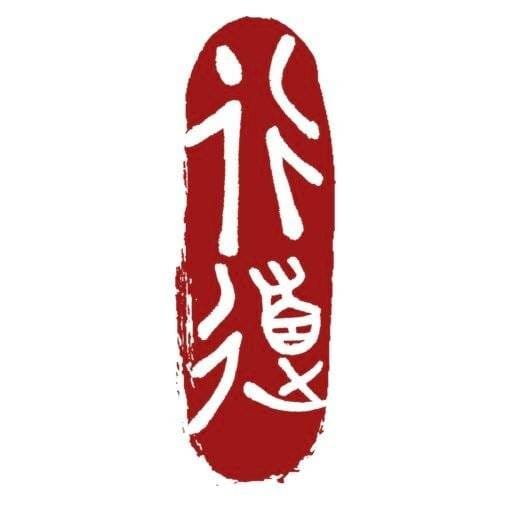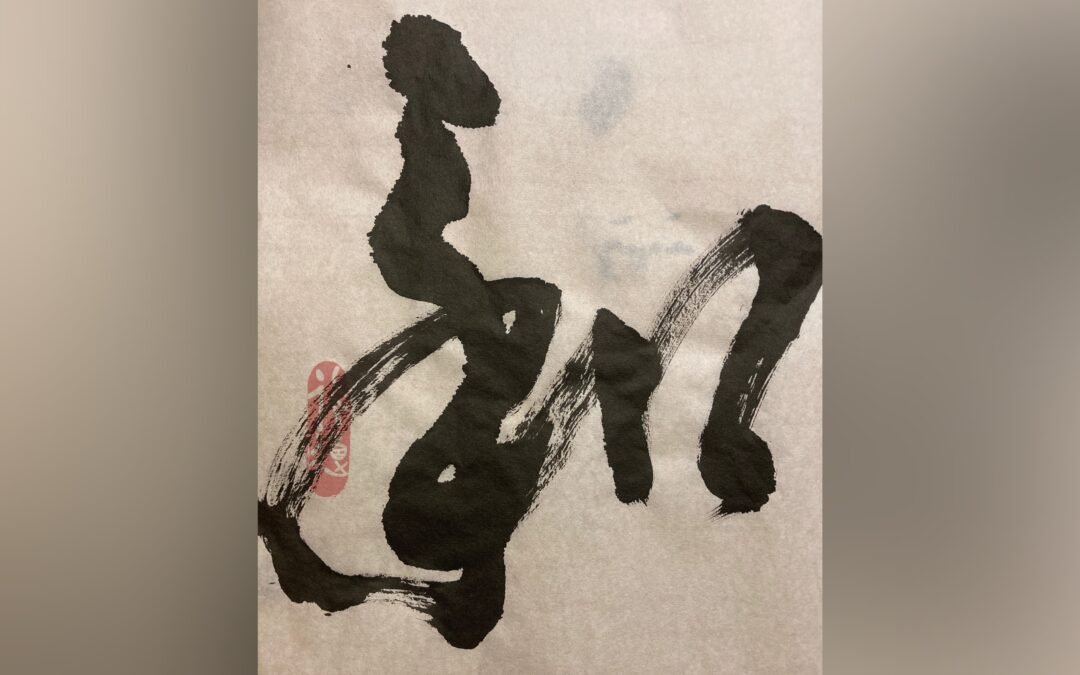Picture above: “wa” or “harmony”. Shodo piece by Ivan Melo.
About Aikido training, harmony, and transformation.
by Ivan Melo (31.03.2024)
The art we have chosen to learn, is or has the potential to be a multilayered and multidimensional practice, which has the capacity to promote deep human changes.
People come to Aikido for different reasons at first, and I also had mine, but what I saw over the years is that usually Aikido isn’t what they imagined it to be. I was very young when I started, so it was easier for me to drop what I expected and to start to search for the deeper meanings within it. Very few come without expectations, and many come to use the art only to reaffirm their ego and ideology, missing the vastness that lies inside this practice.
When Aikido arrived in the West in the 1960’s, it encountered the hippie movement, with popstars looking to the East in search of their spiritual quests. Aikido was put in the new age bag, it was and it is often called “zen in motion”, and the first poorly translated books from the writings of Morihei Ueshiba (the founder of Aikido) started to come out, mystifying energy and equating Aikido to “love”. By doing so, centuries of rich asian culture in religion, philosophy and war were over simplified.
One of the most common misunderstandings when it comes to Aikido is the concept of harmony. The word harmony often alludes to the idea of an absence of conflict between parts. However, at a closer look, one must see that true harmony can’t be achieved without conflict, otherwise, there would be nothing to “harmonize with”. Even in music, “harmony” is the study and practice of combining diverging sounds simultaneously.
Japan itself, was called in its origins “Yamato”, or “the Great Harmony”. We must then ask, what harmony must mean to people who live under the mercy of the most powerful forces of nature?
As a Zen Buddhist, there’s a great metaphor I find fitting to Aikido training: when people come to the monastery to train, they arrive like rocks all rough around the edges. The monastery life puts them in a bag and shakes them until they all become smooth and rounded by the clashing and friction against one another. Rocks have no feelings, but as for humans, such process can be triggering.
We often say that people can’t hide on the mat: we all dress the same, we all execute and receive the techniques, we all offer our bodies to each other in order to practice. However, we are embodied consciousness and our bodies store our fears, anxieties and traumas. As we lend our bodies to be thrown, twisted, pinned down and we do the same to our partners, many emotions can and will arise.
The physical practice that happens in class, becomes a mirror in which we can see ourselves, allowing us to recognize and reconcile the forces that lie within us. But unless the practitioner sees and recognizes their emotional, physical and mental patterns and decides to be released from them, the power of Aikido to be a transformative practice is greatly reduced, if not completely gone.
When I was still in Brazil, a prison guard joined the dojo because he wanted to feel prepared to defend himself in the horrible working conditions he faced. He wasn’t old, but he looked much older than he was and I still remember the feeling of training with him, because his body felt like iron. His muscles were shortened, tensed beyond belief, his eyes were always wide open and vigorous movements could trigger all sorts of fear responses.
In the course of a few years, I saw that man transform inside and out, more relaxed, more confident, flexible and looking younger. Technically he never became very skillful, but I remember the day he said “I don’t come to Aikido for self-defense anymore, but because it does me well, I’m happier and more relaxed, even at work”. There are many such stories.
Having said all that, the potential therapeutic effects Aikido might have doesn’t make it a therapy. If serious psychological and emotional problems need to be healed, then a professional in the field should be sought.
At its base, Aikido is still a vigorous martial art underpinned by centuries of warrior culture. To understand more of its origins and the lineage of our dojo, read this article.

